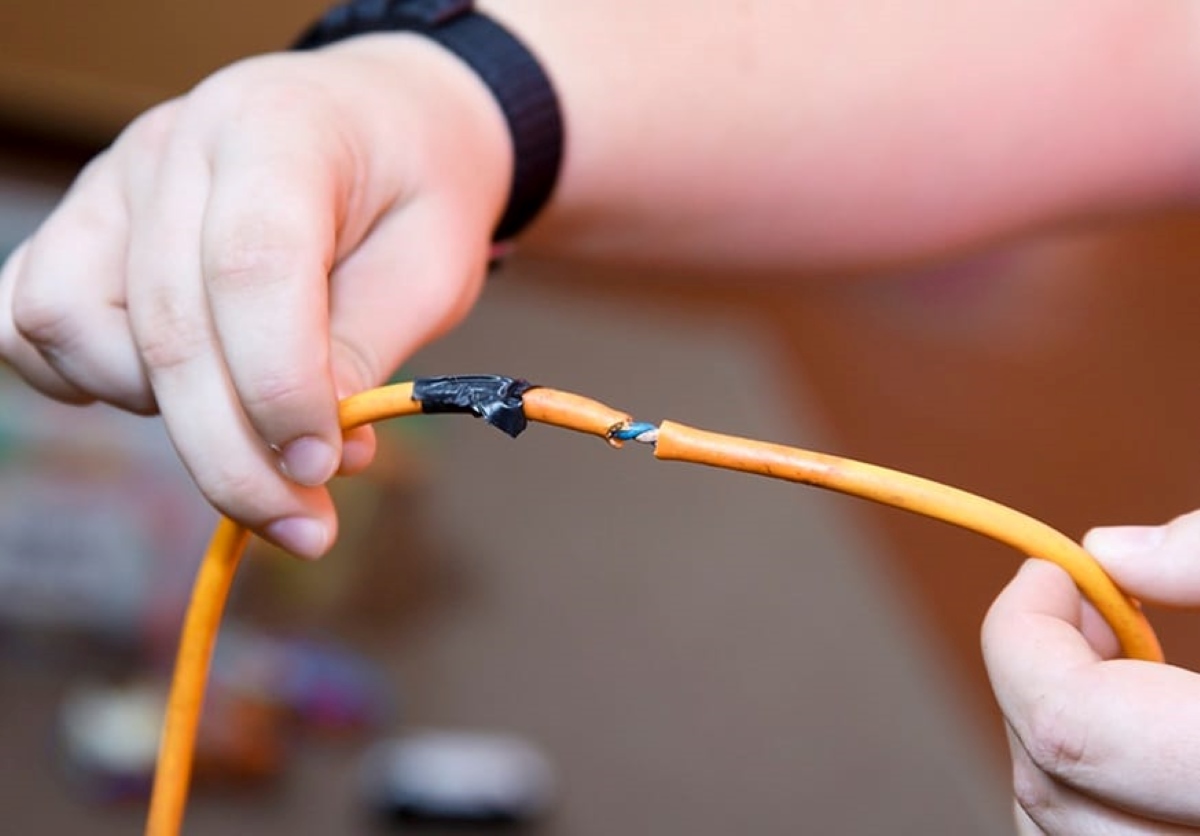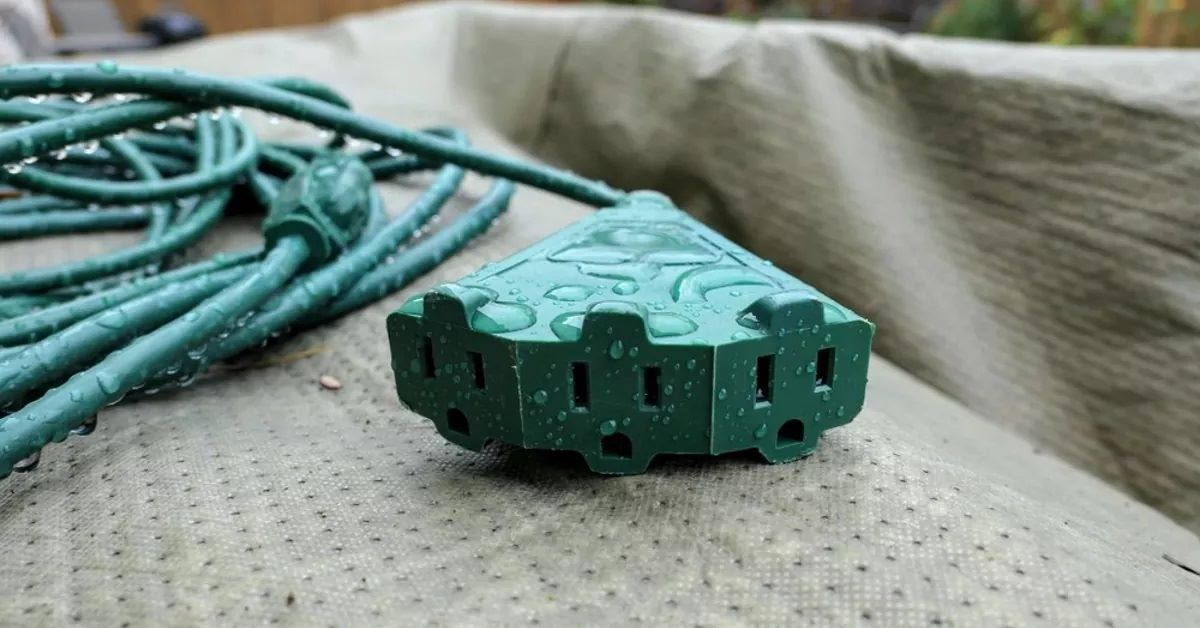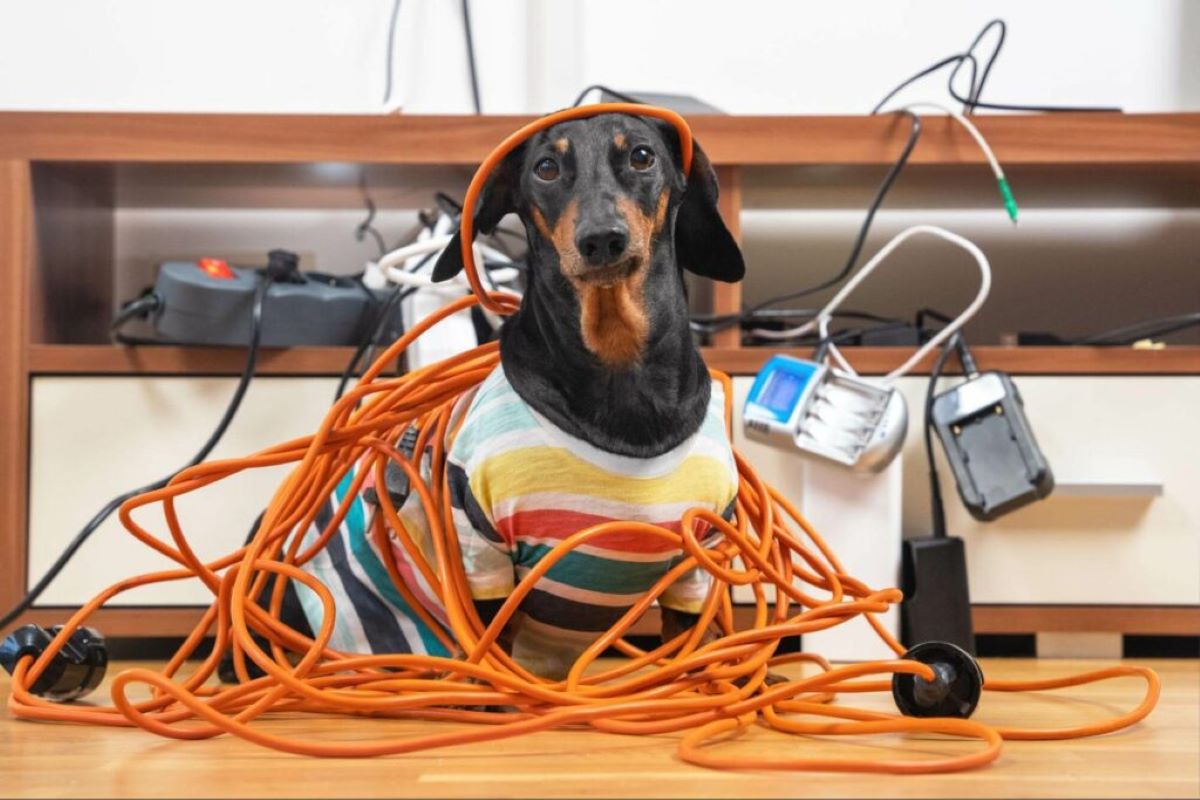Home>Articles>What To Do When Your Stove Electrical Cord Is Too Short


Articles
What To Do When Your Stove Electrical Cord Is Too Short
Modified: August 21, 2024
Discover helpful articles on what to do when your stove's electrical cord is too short for the plug-in. Find solutions and tips for extending the cord length and ensuring safe usage.
(Many of the links in this article redirect to a specific reviewed product. Your purchase of these products through affiliate links helps to generate commission for Storables.com, at no extra cost. Learn more)
Introduction
When dealing with electrical appliances, it’s not uncommon to encounter situations where the power cord is too short to conveniently reach the nearest electrical outlet. This can be particularly frustrating when it comes to large appliances like stoves, where the location of the outlet may not be ideal for the placement of the appliance. However, there’s no need to worry! There are several steps you can take to address this issue and ensure that your stove can be properly connected without compromising safety.
In this article, we will guide you through the process of dealing with a stove electrical cord that is too short for the plug-in. We will provide step-by-step instructions to help you extend the length of the cord, ensuring a secure and safe connection. So, let’s dive right in and explore your options!
Key Takeaways:
- Don’t let a short stove electrical cord limit your kitchen layout. Safely extend the cord length with a compatible extender to conveniently connect your stove without compromising safety or functionality.
- Prioritize safety and proper installation when addressing a short stove electrical cord. Choose a compatible extension cord, verify safety, test the connection, and secure the cord to ensure a safe and functional setup for your stove.
Step 1: Assess the Cord Length
The first step in dealing with a stove electrical cord that is too short is to assess the exact length of the cord and determine how much additional length you need. Start by unplugging the stove and carefully measuring the distance between the appliance and the nearest electrical outlet. Take into account any obstacles or constraints that may affect the placement of the stove and the routing of the cord.
It’s crucial to note that extending the cord length should be done with caution to avoid potential hazards and electrical risks. The cord should not be extended excessively, as this can lead to overheating, increased resistance, and potential fire hazards. Therefore, it’s essential to measure precisely and consider the optimal length required to safely connect the stove.
If you find that the cord length is only slightly short and can be managed without any extensions, you may be able to adjust the placement of the stove or the outlet slightly to ensure a proper connection. However, if the cord length is significantly shorter than needed, move on to the next step to address the issue.
Step 2: Purchase a Cord Extender
Once you have assessed the cord length and determined that it is too short for your stove to reach the electrical outlet conveniently, it’s time to consider purchasing a cord extender. A cord extender, also known as an extension cord or power cord, is a practical solution to bridge the gap between the stove and the outlet.
When selecting a cord extender, there are a few important factors to consider. First and foremost, choose an extension cord that is compatible with the electrical requirements of your stove. Look for cords that are specifically designed for heavy-duty appliances and can handle the wattage and voltage of your stove without overheating or causing electrical issues.
Additionally, pay attention to the cord’s length. Make sure to choose an extension cord that provides the additional length you need to connect your stove comfortably. Ensure that the cord is long enough to reach the outlet without causing any tension or strain.
Furthermore, consider the quality and safety features of the cord extender. Look for cords that are UL or ETL listed, which indicates that they have undergone rigorous testing and meet safety standards. It’s also recommended to choose cords with built-in surge protection to safeguard your stove from power fluctuations.
Once you have identified the right cord extender for your needs, you can purchase it from your local hardware store or an online retailer. Take into account the brand reputation, customer reviews, and seller’s return policy when making your purchase.
With the cord extender in hand, you are now ready to proceed to the next step and ensure a secure and safe connection between your stove and the electrical outlet.
Step 3: Verify Compatibility and Safety
Before proceeding with connecting the cord extender to your stove and electrical outlet, it’s important to verify compatibility and ensure safety. This step involves checking if the extension cord meets the necessary requirements and taking precautions to prevent any potential hazards.
Begin by examining the extension cord and confirming that it is the appropriate rating for your stove. Look for the cord’s amp rating, which should match or exceed the amperage requirements of your appliance. Using an extension cord with a lower amp rating can result in overheating and pose a fire risk.
Next, inspect the cords for any signs of damage or wear. Frayed wires or exposed conductors can increase the risk of electrical shock or fire. Ensure that the plug and connectors are intact and secure and that there are no visible signs of melting or burning. If you notice any damage, it is crucial to replace the extension cord before proceeding.
Another important consideration is the grounding of both the extension cord and the electrical outlet. Stoves typically require a grounded connection to maintain safety. Check if the extension cord has a grounding prong and ensure that the outlet you are using is also properly grounded. A three-pronged outlet is essential for a grounded connection.
Additionally, it’s important to avoid overloading the extension cord by plugging in multiple high-powered appliances simultaneously. Each extension cord has a specified amp rating, and exceeding this limit can lead to overheating and pose a fire hazard. Only use the cord extender for the stove and avoid connecting any other devices to it.
Lastly, ensure that the extension cord is positioned in a way that prevents tripping hazards and accidental damage. Avoid placing the cord in high-traffic areas or under rugs where it can be easily stepped on or crushed. Use cable ties or cord organizers to secure the cord and keep it away from heat sources or sharp objects.
By carefully verifying compatibility and addressing safety considerations, you can proceed with confidence to the next step and establish a secure connection between your stove and the extension cord.
Consider using a heavy-duty extension cord to reach the nearest outlet. Make sure it’s rated for the stove’s power requirements and use it as a temporary solution until you can have the stove’s cord professionally replaced.
Step 4: Prepare the Stove and Plug In
With the compatible and safe extension cord in hand, it’s time to prepare your stove and plug it into the electrical outlet. Before proceeding, make sure that both the stove and the extension cord are in the off position and unplugged from the power source.
First, position your stove in its desired location, ensuring that it is level and stable. If necessary, use a leveling tool to adjust the stove’s position to prevent any wobbling or instability. Keep in mind that the stove should be placed at a safe distance from any flammable materials or other appliances.
Next, locate the power cord outlet on the back or side of the stove. Carefully insert the plug of the extension cord into the power cord outlet, ensuring a firm and secure connection. Make sure that the prongs of the plug align with the corresponding slots of the outlet, and apply gentle pressure to push the plug into place.
Once the plug is fully inserted, give it a slight tug to ensure that it is securely connected. You should not be able to remove the plug easily. If it feels loose or comes out with minimal force, double-check the connection and ensure that it is properly aligned.
After confirming that the plug is securely inserted, route the extension cord in a safe manner towards the electrical outlet. Avoid placing the cord near hot surfaces or sharp edges that could damage the cord. Use cord clips or hooks to secure the cord to walls or furniture, keeping it organized and out of the way.
Now, position the extension cord near the electrical outlet and align the plug with the sockets. Firmly insert the plug into the outlet, ensuring that it fits snugly. Give it a gentle tug to ensure a secure connection.
Finally, locate the on/off switch or control panel on your stove and turn it on. Check for any power indicators or lights that confirm the stove is receiving electricity. If everything looks and functions properly, you have successfully prepared your stove and plugged it into the electrical outlet.
Proceed to the next step to test the connection and ensure that the stove is functioning as intended.
Read more: What To Do If I Cut My Grass Too Short
Step 5: Test the Connection
Now that you have prepared and plugged in your stove using the extension cord, it’s crucial to test the connection to ensure that everything is working correctly and safely. Testing the connection will help identify any potential issues before fully relying on the stove.
Begin by verifying that the power is flowing through the extension cord to the stove. Check the stove’s control panel or power indicator lights to ensure they are activated and functioning properly. If there are no signs of power or the stove does not respond to the controls, the connection might be faulty.
To further test the connection, turn on one of the stove’s burners or the oven. Listen for the sound of the burners igniting or the oven heating up. Assess if the appliance is reaching the desired temperature or if there are any abnormalities in the functioning.
While the stove is in operation, closely monitor the extension cord and the plug connection for any signs of overheating. Feel the cord and plug periodically to ensure they are not becoming excessively hot. If you notice any unusual heat or burning smells, immediately switch off the stove and unplug it from the outlet. This could indicate a potential electrical issue or an insufficiently rated extension cord.
If the stove is functioning properly and the connection remains secure without any issues, you can proceed to the next step. However, if you encounter any problems during the testing phase, it is crucial to address them before continuing to use the stove.
Testing the connection ensures that your stove is receiving the necessary power and operating as intended. By doing so, you are taking proactive steps to ensure both proper functionality and safety.
Step 6: Secure the Cord
After testing the connection and confirming that your stove is functioning properly, it’s important to take additional measures to secure the extension cord and prevent any potential hazards or accidents. Properly securing the cord will help avoid tripping hazards, protect it from damage, and maintain a neat and organized setup.
Start by examining the routing of the extension cord and identifying any potential areas where it might be prone to getting snagged, pinched, or tangled. Adjust the cord’s path as necessary, ensuring it is away from high-traffic areas and sharp edges.
Use cable clips, hooks, or cord organizers to secure the extension cord to walls, furniture, or baseboards. This will not only help prevent the cord from accidentally getting pulled, but also keep it elevated off the floor to minimize tripping hazards.
Additionally, make sure that any excess cord length is neatly organized and tucked away. Avoid coiling the cord tightly or creating loops, as this can lead to heat build-up and potential damage. Instead, create loose loops or zigzags to allow for proper airflow and prevent strain on the cord.
Consider using cord covers or protective sleeves to shield the extension cord from potential damage. This is especially important if the cord needs to pass through areas where it could be exposed to foot traffic, pets, or other hazards. Cord covers will help protect the cord from accidental cuts or compression.
Regularly inspect the extension cord and its connection points for any signs of damage, wear, or looseness. If you notice any frayed wires, exposed conductors, or loose connections, immediately disconnect the stove and replace the extension cord.
Lastly, educate everyone in your household about the importance of safety when it comes to the stove and the extension cord. Encourage them to be aware of the cord’s location and to notify you if they notice any issues or concerns.
By securely fastening the extension cord and taking steps to prevent accidents or damage, you can enjoy cooking with peace of mind, knowing that your stove is safely connected to the electrical outlet.
Conclusion
Dealing with a stove electrical cord that is too short for the plug-in may initially seem like a daunting task, but with the right steps and precautions, it can be easily resolved. By following the steps outlined in this article, you can extend the cord length and ensure a safe and secure connection between your stove and the electrical outlet.
Assessing the cord length, purchasing a compatible cord extender, and verifying safety are all crucial steps in addressing this issue. It’s important to choose an extension cord that meets the electrical requirements of your stove and prioritizes safety features such as grounding and surge protection.
Preparing the stove and plugging it into the electrical outlet requires attention to detail, making sure the connection is secure and properly aligned. Testing the connection ensures that the stove is receiving power and functioning correctly before relying on it for cooking or baking.
Securing the cord is the final step in this process, helping to prevent tripping hazards and safeguarding it from damage. Properly organizing and protecting the extension cord reduces the risks of accidents and potential electrical issues.
Remember, safety should always be a top priority when dealing with household appliances. If you encounter any difficulties or concerns during the process, it’s advisable to seek professional assistance to ensure proper installation and electrical safety.
By following these steps and taking the necessary precautions, you can overcome the challenge of a stove electrical cord that is too short for the plug-in. Enjoy the convenience of a properly connected and safely functioning stove, making your cooking experience more effortless and enjoyable.
Ready to tackle more around your house? Dive into our guide on DIY home improvement to transform your living space with your own hands. Or maybe you're planning to extend your workspace; learn electrical wiring techniques to safely run wires overhead to your garage. For routine upkeep, don't miss our comprehensive checklist on home maintenance to keep your home in top shape year-round.
Frequently Asked Questions about What To Do When Your Stove Electrical Cord Is Too Short
Was this page helpful?
At Storables.com, we guarantee accurate and reliable information. Our content, validated by Expert Board Contributors, is crafted following stringent Editorial Policies. We're committed to providing you with well-researched, expert-backed insights for all your informational needs.















0 thoughts on “What To Do When Your Stove Electrical Cord Is Too Short”